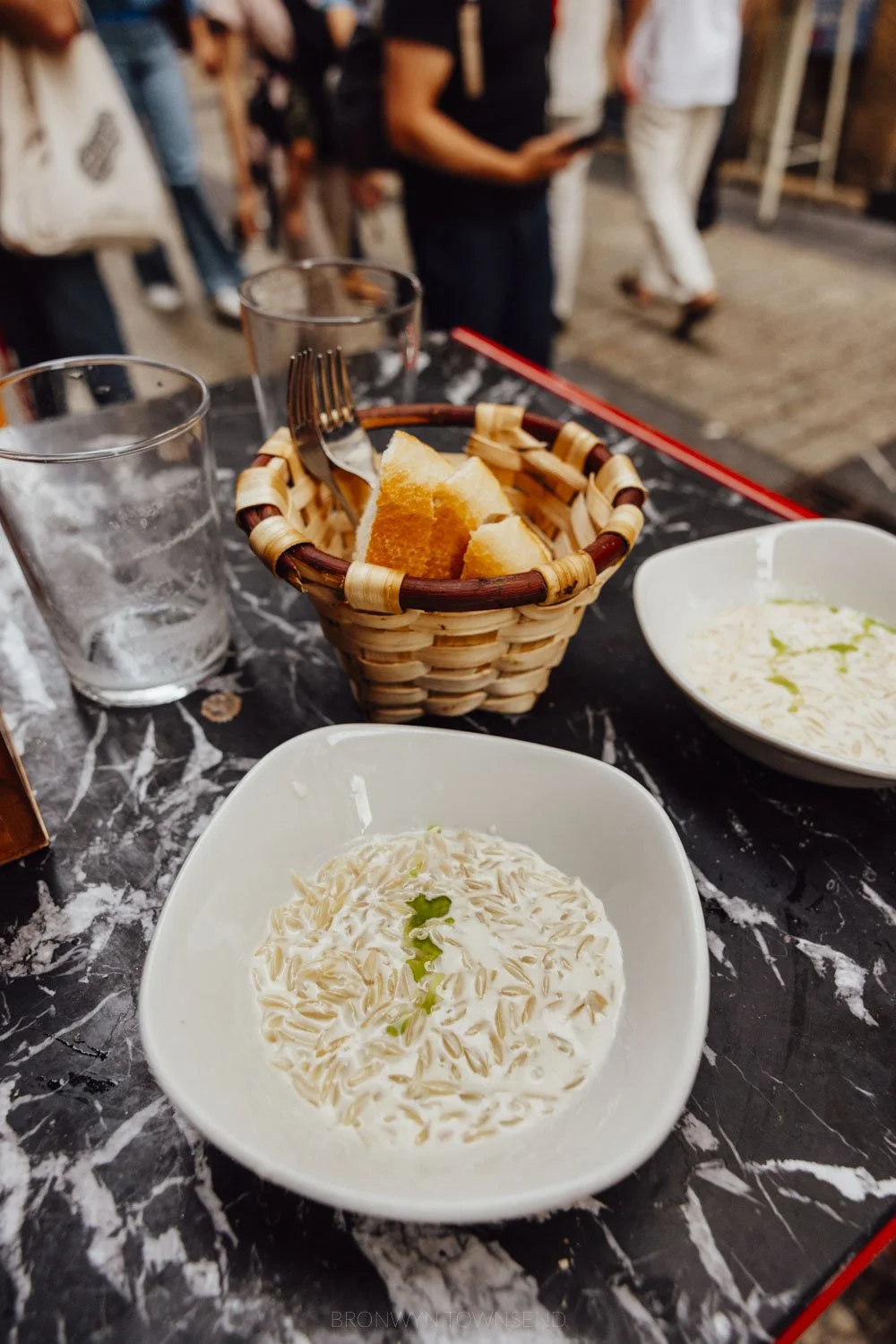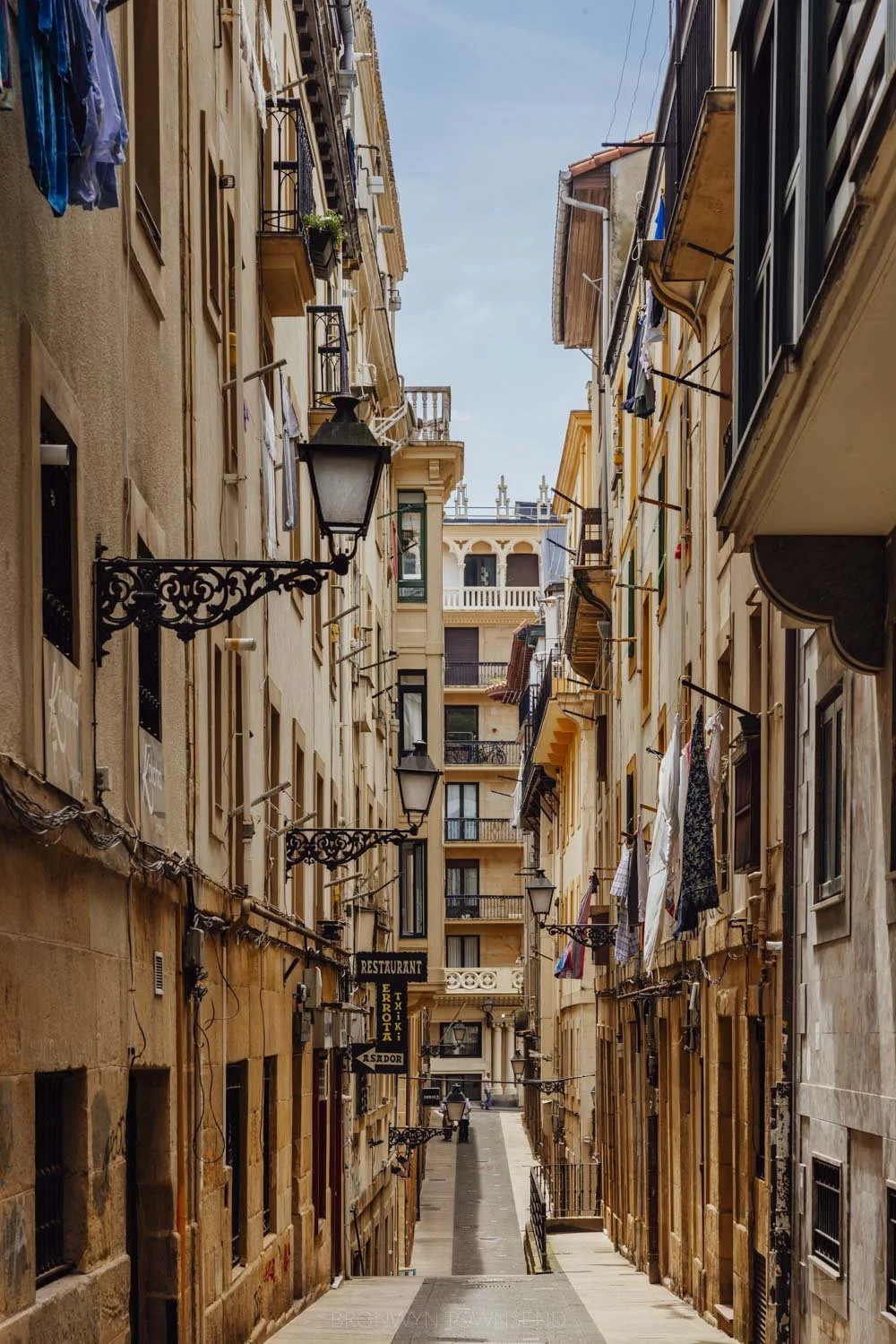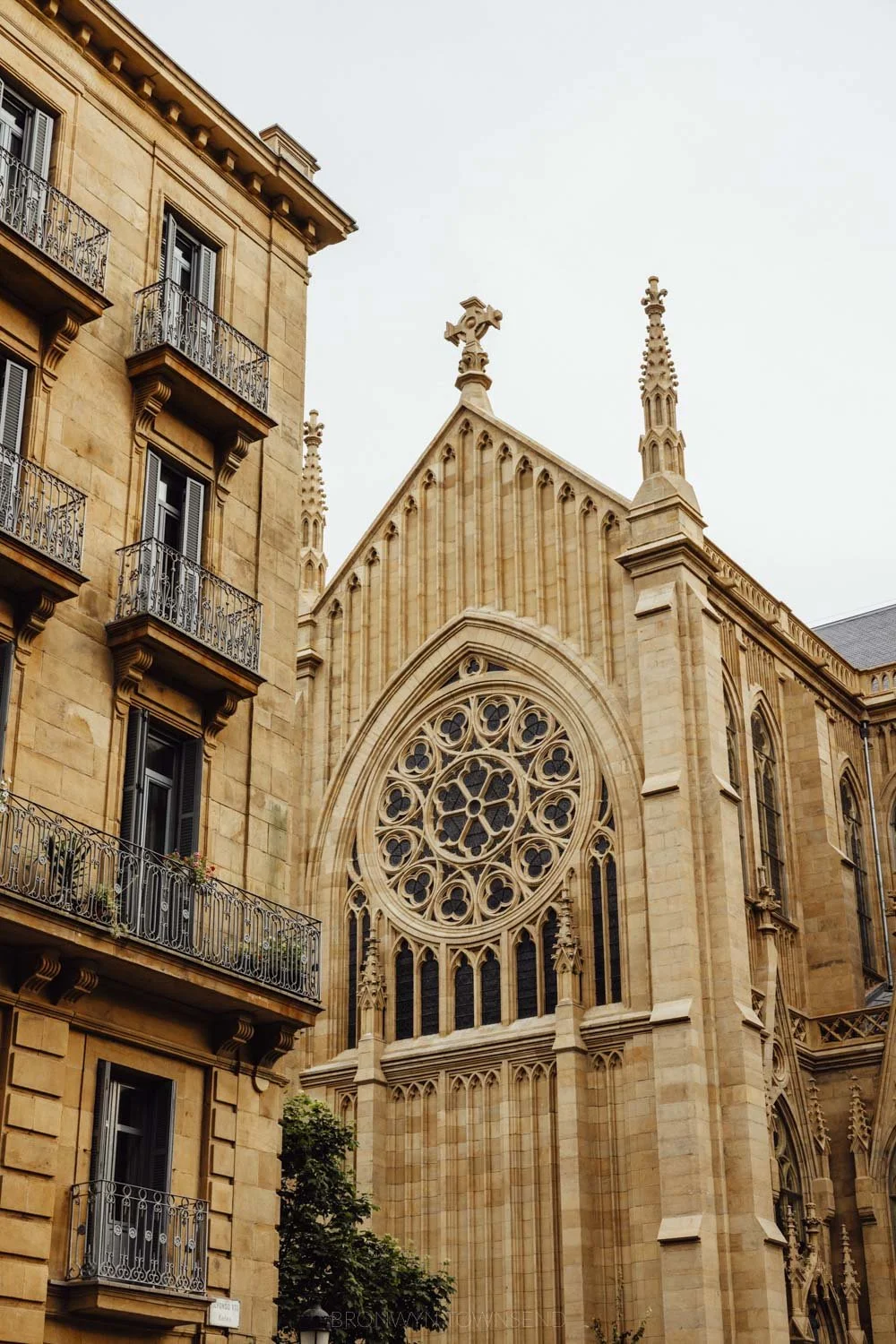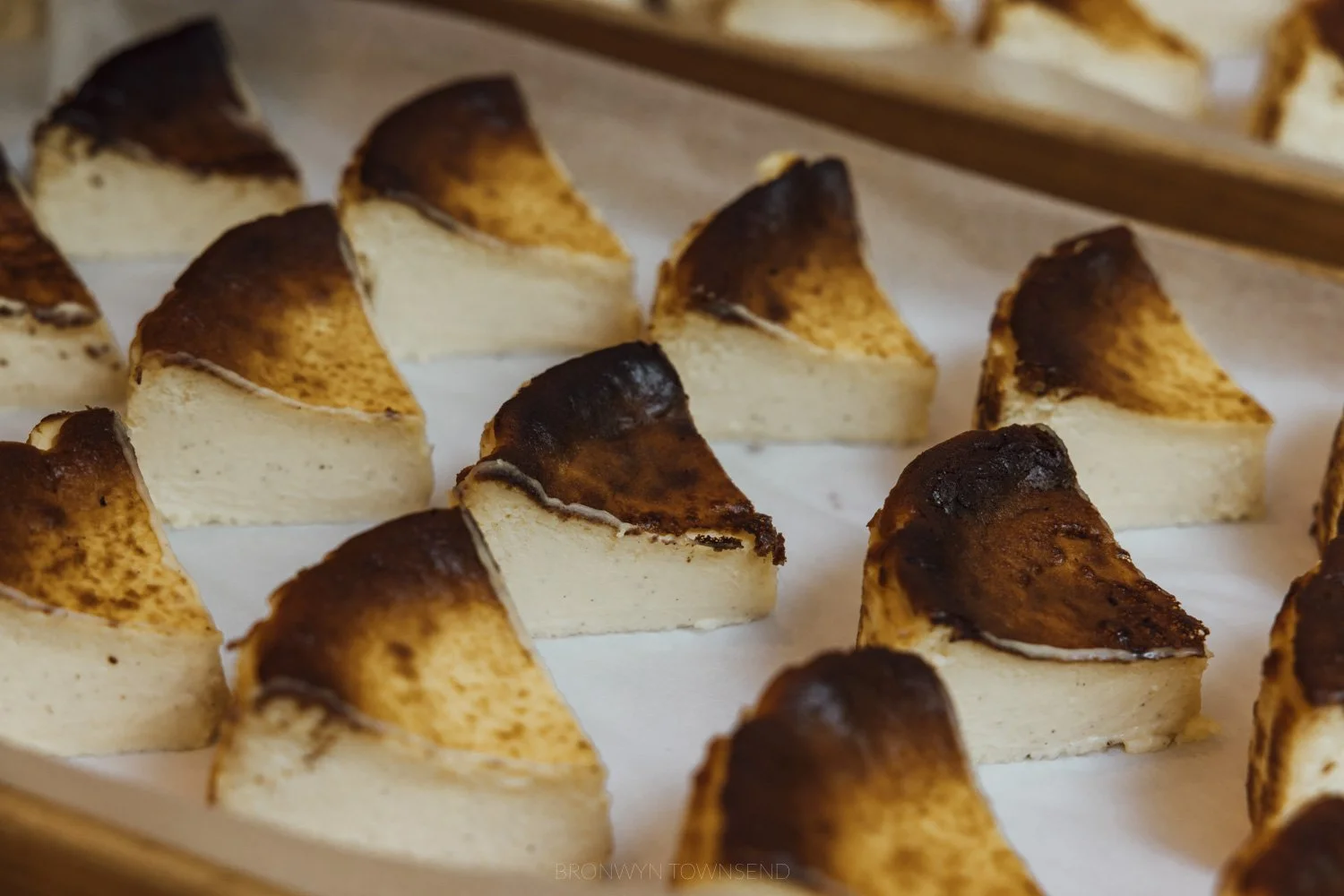17 Brilliant Things to Do in San Sebastian, Spain
Discover the best things to do in San Sebastian with this round up. Whether you’re planning to eat your way through the best dishes on offer or making the most of the city’s undeniable natural beauty, you can’t beat this unique corner of Europe.
This post may contain affiliate links.
If you choose to purchase I may receive a small commission at no additional cost to you. By using these links, you are supporting the ability for me to continue creating content for this site and its running costs.
Despite its small size, the culinary capital of the Basque region is brimming with activity. Cradled by the golden sands of a sheltered bay on the northern shores of Spain, San Sebastian is undeniably bewitching. A hotbed of culinary excellence, this glorious city had escaped my radar for too long. Early in the summer, I spent a week taking a slower pace to my travels to soak up everything San Sebastian has to offer.
Morning walks to my local coffee shop, lunchtime strolls along the beachfront promenade, and evenings getting my fill of pintxos (small bites) and txakoli - the region’s sparkling wine. Surrounded by the stunning Belle Époque architecture, a legacy of the city’s regal past, I quickly came to love my daily routine.
While most only afford themselves a day or two in San Sebastian, the city is deserving of a much-longer visit. Rising to become the summer playground of the Spanish Royal Family in the mid-19th century, Donostia, as it’s known by its Basque name, is home to centuries’ old traditions, a unique language, and a thriving gastronomic scene.
If you’re wondering what to do in San Sebastian, read on for my list of the foodie, cultural, and natural attractions that make this city on the Cantabrian Coast a must-visit.
1 | Go pintxos bar hopping
If there’s one thing San Sebastian is known for, it’s food. While the rest of Spain has tapas, the small bites in this northern coastal city are known as pintxos. Typically served as bite-sized snacks served on toothpicks or pieces of bread, they’re a cornerstone of the social scene.
The best way to experience pintxos is to go bar hopping. Often displayed on countertops, people often pop in for a few pieces to enjoy with a small beer or glass of txakoli, a type of white wine from the region.
I looked forward to heading out for dinner every evening to try a few new bars or taverns in Casco Viejo (Old Town). A few of my favourites were Borda Berri, Bar Nestor, and Tamboril. A guided tour is a great way to get expert guidance and nab a spot in some of San Sebastian’s best pintxos hotspots.
2 | Ride the funicular up Monte Igueldo for incredible views
On either side of the horseshoe-shaped bay are hilly peaks, the highest of which is Monte Igueldo. This is also where you will find one of the best views across San Sebastian and you can do it without a sweaty climb to the top.
The 100-year old traditional wooden cog railway takes just a few minutes and costs just €4.50 for a return journey. Reaching a height of 181 metres above the town below, you can take in sweeping views across the Cantabrian Coast and the Sierra Madre mountains in the distance.
I’d recommend heading here later in the afternoon for the best light, as the sun will be behind you. In the height of summer, the funicular does stop before sunset, so consider this when planning your visit.
3 | Explore the Old Town
Tucked against the foot of Mount Urgull, the Casco Viejo’s grid layout is full of pintxos bars, historic churches, and stores selling everything from art to surfwear. Easy to navigate, you can cover the streets of the Old Town in an hour or two, but that would hardly do it justice.
Instead, pop into the stores selling pieces handcrafted by locals, grab a bite to eat at one of the countless pintxos bars, or simply wander until something catches your eye. Sandwiched between the River Urumea and La Concha, this area is the second-oldest neighbourhood in San Sebastian.
4 | Hike up Mount Urgull
One of the best things to do in San Sebastian is also one of my favourites. While information suggests this as a hike, it’s more of an uphill walk along a paved path that snakes its way through the forested hillside of Mount Urgull.
Dubbed ‘the Green Lung’, the climb to the top affords you views directly over the old town, across the Bay of Biscay, and to Playa de la Zurriola - a beach known for its surf scene. The walk takes around 30-40 minutes, depending on your pace and it’s worth stopping off at Castillo de la Mota, a 12th-century fortress.
It took me around 40 minutes to reach the top, including stops for photos along the way. The incline and humidity are the biggest factors here, making this an easy-medium walk for those with an average fitness level.
5 | Sunbathe and swim at La Concha
La Concha, named after its seashell-shaped bay, is one of the most iconic spots in San Sebastian. The golden shores meet a shallow bay that is sheltered from the open sea, making it a great place to swim.
Popularised in the mid-29th century by Isabel II, the beach and wider city became a hotspot among high society and aristocrats. Little has changed, with La Concha still considered one of the top things to do in San Sebastian. More than 1 km long, the sandy beach is full of revellers in summer making the most of the long sunny days.
There are plenty of amenities at the beach from sunshades for hire to changerooms/showers and bathrooms, and a host of snack and dining options nearby. Located right by the Old Town, it’s easy to reach.
6 | Pay a visit to Plaza de la Constitución
The centre point of celebration in San Sebastian is Plaza de la Constitución. Built in 1813, the square was formerly used as a bullring, which is why you’ll notice the balconies with colourful numbered doorways, which once served as boxes for spectators to watch the bullfights.
Now, the plaza is full of restaurants, terraces, and shops. A great spot for an afternoon aperitif, it really comes alive from around 5pm onwards. Plaza de la Constitución is where most of the city’s events and festivities take place - one of the most popular events is the flag-raising ceremony in January every year.
7 | Admire Basilica of Santa María del Coro
One of the most beautiful buildings in San Sebastian is Santa Maria del Coro. I have a soft spot for Baroque architecture and the ornate facade dedicated to Saint Sebastian was one of my favourite spots to admire on quiet mornings and as the sun set.
Built in the mid-18th century on the foundations of a previous church, the Basilica operates as a functional church as well as a museum now. Inside, you’ll find a collection of over 150 historic and contemporary pieces and the entry fee is just €3. Just be sure to check opening times, as it does close during the middle of the day for a few hours.
8 | Learn to surf
Spain might not be the first place that springs to mind when it comes to surfing, but this stretch of coast in Basque from San Sebastian to Biarritz in France is renowned for its surf-ready swell.
Many expect I can already surf as an Australian, but that’s not the case. Instead, San Sebastian is a great place to take some surfing lessons if you’d like to try it for yourself and catch a few waves.
Playa de la Zurriola is considered one of the best places to surf in San Sebastian and there are several surf schools in town that you can book lessons with. I’d recommend trying few a few days to ensure you can maximise your time learning and
9 | Check out Miramar Palace
You might be curious about the English country house-style building perched on a hill overlooking the sea in the Antiguo neighbourhood. Miramar Palace was constructed under instruction from Queen María Cristina of Austria in 1893 and served as the summer home of the Spanish Royal Family for years.
In 1973, the local council acquired the building and it is now used for public and private events. While you can’t visit the interior, you can stroll around the gardens to admire the views over the bay. I loved being there in time for hydrangea season as the ornamental gardens in front of the palace were in bloom - I recommend early to mid-June if you want to see this.
You’ll often find people enjoying picnics with friends or reading in the gardens. Below, there is a tunnel that connects the walkway between La Concha and Ondaretta Beach and you can interact with the tunnel that gives information about the weather and the sea conditions. At night the tunnel is lit up and the marble-inspired design is especially beautiful at this time.
10 | Learn about Basque history and culture at San Telmo Museum
Set within a 16th-century convent, the San Telmo Museum is a must if you’re looking for a deeper dive into Basque culture and history. Set at the foot of Mount Urgull at the back of the Old Town, the museum hosts a collection of permanent and temporary collections.
To create more space as the museum grew, an additional building was created by architects Nieto & Sobejano which features a plant wall. It was designed to create a flow between Mount Urgull and the Old Town, and complement the Gipuzkoa architecture of the original convent building which combines Gothic and Renaissance styles.
The museum is open Tuesday - Sunday from 10am and adult tickets cost €10.
11 | Wander through Parque de Alderdi Eder
An open space between La Concha and the Town Hall, the park is a place of social gathering for locals and tourists. An elongated space defined by manicured gardens and lofty palm trees, children can ride the vintage carousel or you can stop to watch the street performers on a sunny afternoon.
The geometric garden beds are framed by tiles and there are several sculptures including that of writer Salaberría. Adjacent to the Old Town, the new promenade stretches from the seafront of La Concha, past Parque de Alderdi Eder and towards the aquarium before wrapping around the foot of Mount Urgull. I’d recommend following this walk to enjoy the coastal stretches beyond San Sebastian’s bay.
12 | Head over to Isla de Santa Clara
A tiny island located in the bay, Isla de Santa Clara is a tranquil spot for an excursion. While you could swim there from Odaterra Beach, a boat tour is the perfect way to explore the island. Despite its small size, this green space is a lovely retreat where you can picnic, swim and enjoy views looking back towards the city.
Designated as a Historical National Interest Site more than 40 years ago, the island hosts a celebration in September. With a single lighthouse that now stands in the place of the chapel that was previously used to house those sick with the plague in 1597, the island is mostly focused on green space now.
13 | Visit the Cathedral of the Good Shepherd
Directly down the street from Basilica of Santa María del Coro, the Cathedral of the Good Shepherd, also known as Catedral del Buen Pastor de San Sebastián, is the largest religious building in Gipuzkoa. Built at the end of the 19th century, its Neogothic style takes influence from churches in Germany and England.
The cathedral is home to one of Europe’s largest organs and the stained glass windows are a notable feature. The 75-metre-high tower is easily spotted across San Sebastian’s skyline, especially from the top of Mount Urgull.
14 | Don’t miss trying delicious Basque cheesecake
San Sebastian is the birthplace of the Basque cheesecake and I had to enjoy it several times during my week in the city. La Vina is the place to go for this incredibly morish baked cheesecake. Baking hundreds of the exceptional desserts daily, I recommend popping by early afternoon to avoid the rush. I stopped by after some pintxos for lunch and didn’t have to queue. Just note that La Vina closes for a few hours from around 3:30pm-7pm when it reopens for dinner.
Alternatively, I had a super creamy slice from Bassk that was ultra smooth and not too sweet - the perfect afternoon treat to enjoy in Gipuzkoa Plaza.
15 | Taste the local wine - Txakoli
Spain has roots that go back centuries in winemaking, but Txakoli (pronounced Cha-koli) is a newer wine that’s produced in Basque Spain. Typically served as an aperitif, it’s a dry white wine that is lightly sparkling. The unique thing about Txakoli is that it’s poured from a height to aerate the wine and enhance its acidity.
In the 1980s, Txakoli was at risk of dying out as it was typically a homemade style of wine that wasn’t considered interesting. That changed in the 1990s when this unique wine had its renaissance moment as producers realised the potential of native grape varieties from the region. Txakoli pairs well with seafood and I’d recommend trying this alongside pintxos for the full San Sebastian experience. Or, why not join a Txakoli wine tour to learn more about its history and unique qualities?
16 | Go wine tasting in Rioja
Looking for more wine experiences? Join a wine-tasting tour to Rioja where you can wander through the vineyards, learn about the wine-making process, and visit the medieval village of Laguardia.
Around two hours from San Sebastian, the Rioja region is best known for its red varieties, principally Tempranillo and Garnacha. Passing through scenic countryside, this is a day trip worth doing if you’re a wine enthusiast.
17 | Explore more of the Basque region with a day trip
If you have more time in San Sebastian, then a day trip is a great way to explore more of the Basque region. Head over the border to Biarritz in France with this day tour that visits the historic town of Bayonne and the charming seaside spot, Saint-Jean-de-Luz.
If you want to enjoy more Basque culinary excellence, then this day tour to Hondarribia, Biarritz, and Saint Jean de Luz has a focus on gastronomy and landscapes along the Basque Coastline.
























